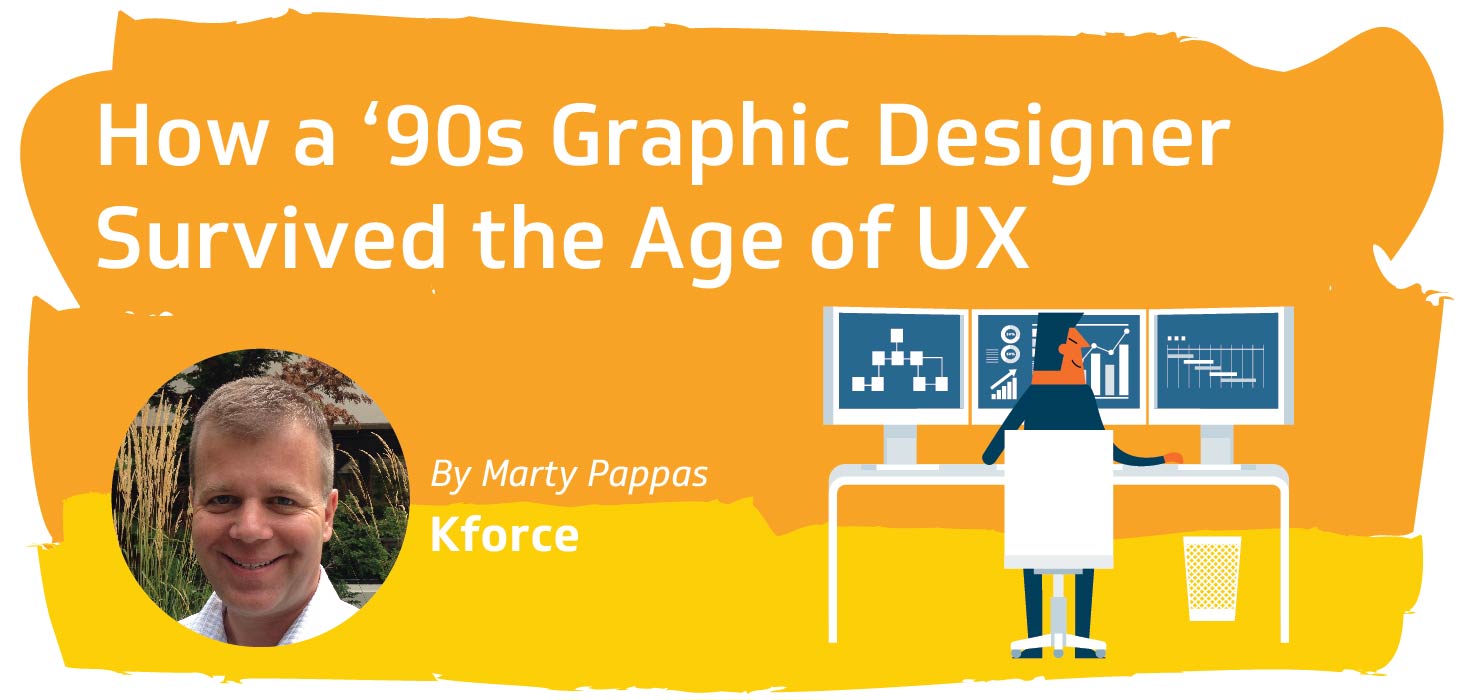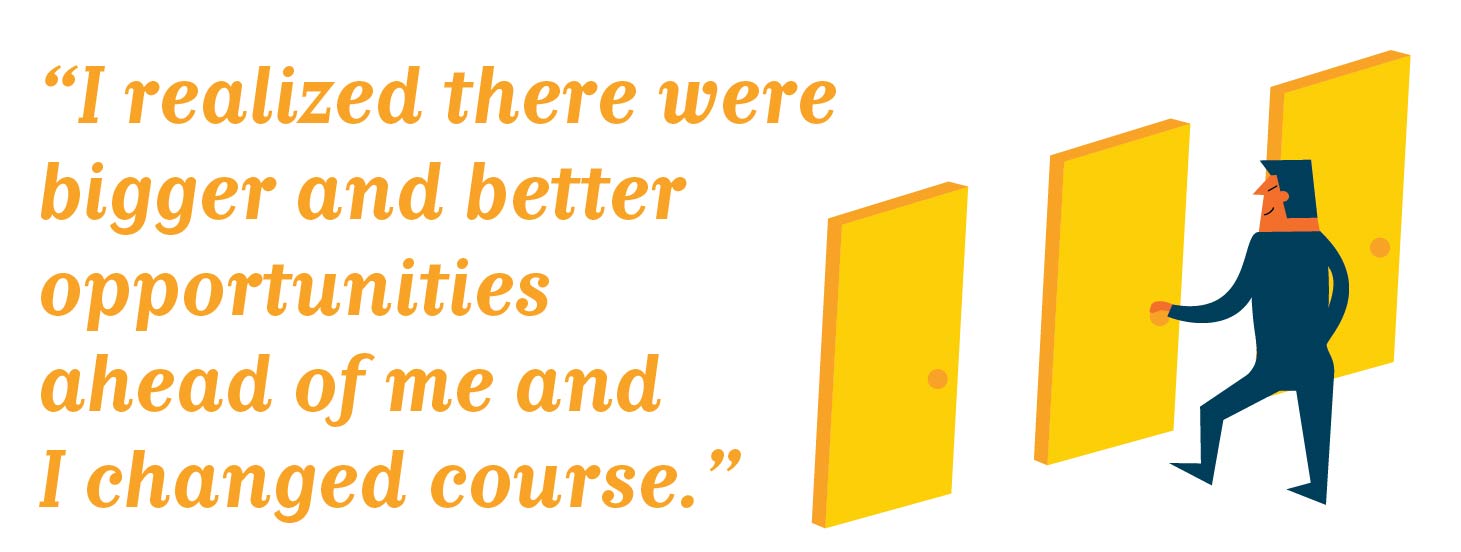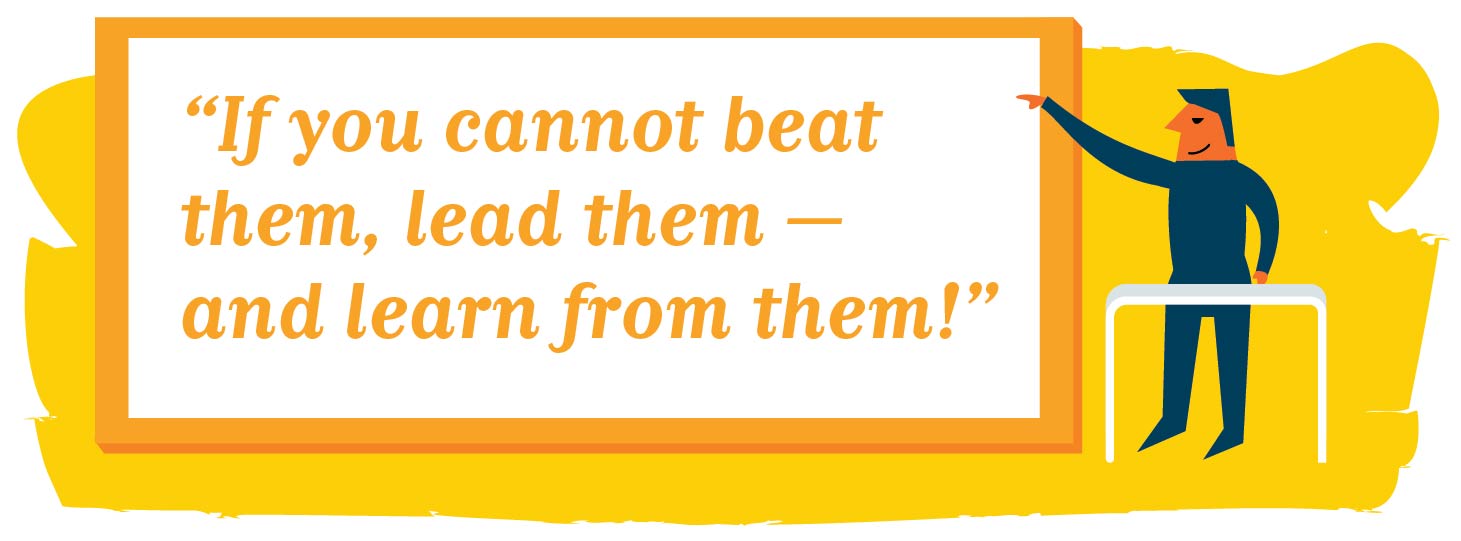
PUBLISHED MARCH 13, 2017
Learn How to Adapt Your Career to Industry Trends
It’s around 2:30 AM, and I am pleading with myself to just fall asleep already.
Slow breathing, counting sheep, reading a book – none of that is working. All I could think about was my career and the big, fat dilemma sitting on my shoulder. It felt like 300 pounds on my shoulders, and it haunted me every day. I just couldn’t figure out how an average guy like me, with a dated degree in visual communications, competes with such a smart and driven workforce. The experience design field was quickly maturing, and I worried about being left behind.
That was about 15 years ago. And then I had an epiphany: if I can’t beat them, I would lead them – and learn from them! Here’s how it happened.
I earned my visual communications degree in 1994 during a time when technology saw notable growth – digital answering machines, DVDs, electric cars, memory cards, plasma display screens and the Pentium processor to name a few. What intrigued me the most was the World Wide Web – a new medium with no boundaries! I aspired to be an art director at a global advertising agency while AOL, Netscape, and EarthLink battled for a stronghold of the 56 Kbit/s consumer internet market.

Learning HTML to build homegrown web sites was trendy. Graphic designers with a strong print portfolio were hired on the spot by start-ups and brick-and-mortar companies. Ecommerce sites were in high demand as companies recognized a new revenue channel. As glamorous as it sounded to be an art director and create full page ads for Coca-Cola and Honda, I realized there were bigger and better opportunities ahead of me and I changed course. I began poking at pixels instead of points.
I became a user interface designer.
What an exciting time to be in this field! UI design has transformed how big brands interact with their customers. The acceptance of the design professional by organizations has manifested a new culture of developing products through user experience methodologies.
Today, I advocate the discovery of design in industries that once perceived customer-centric design as nonessential.
I work with design engineers, professionals with masters in HCI and creatives with “Ph.D.” in their titles. UX designers and information architects who have portfolios showcasing multi-platform innovative design solutions are the norm. Front-end development skills are now as instinctual as blinking and breathing.

Right out of school, young design professionals are capable of translating raw data into thoughtful hypotheses and building complex user flows. Additionally, they are researching market trends and conducting competitive analyses. Add to all of that, they can create beautiful forward thinking designs. They alone, however, are a puzzle piece in a box of 4,999 other puzzle pieces. The masterpiece cannot be complete without guidance and leadership.
That’s where I come in.
More than two decades of experience innovating business solutions with prominent leaders, succeeding and failing along the way, has given me the knowledge and skills to lead the new wave of ambitious and aspiring experience designers.
For years, I have been building dynamic UX design teams, mentoring junior designers, and influencing business strategies with design solutions. It has been a long and fulfilling journey.
The career choices I made over the last 20 years led me down a path of meeting influential leaders and amazing innovators. I soaked it all in, grooming relationships and always paying it forward. The days of employing designers only to “make things pretty” are behind us. Today, I partner with executives who align investments in design with business strategy.
Randall Stevenson, Chairman and CEO at AT&T, recently spoke to business students about today’s workforce and their ability to adapt at the University of Missouri-St. Louis.
He said, “I call it re-tooling and re-skilling because I believe your skill set is two years in duration, max. Mine is two years in duration, max. I’m constantly re-tooling myself.”

My re-skilling efforts are constant and so much fun because I rely on the design community. I represent Kforce as an industry participant at the University of Washington’s Master of Human Centered Interaction Design program, where we discuss industry trends with students and other industry experts. Kforce sponsors UX and tech-focused conferences and meet-ups with thought leaders from tech-savvy companies, including World Usability Day and The Big D. I read articles about design and technology trends, the latest design process and impacts on business posted on Harvard Business Review and the Design Management Institute.
If you find yourself lying awake at night stressing over thoughts of the future state of your career and how you will play a role in it, then take action!
Move quickly and keep an open mind. Stay relevant by embracing industry trends, participating in local meet-ups and attending professional conferences. Connect with the up-and-comers and learn how they craft their trade. Most importantly, do not be afraid of change – embrace it.

